Key takeaways:
- Teletherapy increases accessibility and flexibility, allowing patients in remote areas or with busy schedules to receive mental health care without stigma.
- Challenges include technical difficulties, loss of non-verbal cues, and privacy concerns, which can affect the therapeutic experience.
- While teletherapy offers convenience, it may lack the emotional depth and connection found in traditional in-person therapy, raising questions about its overall effectiveness.
- The future of teletherapy may involve advanced technologies like VR and AI, enhancing personalization and fostering greater community connections among clients.
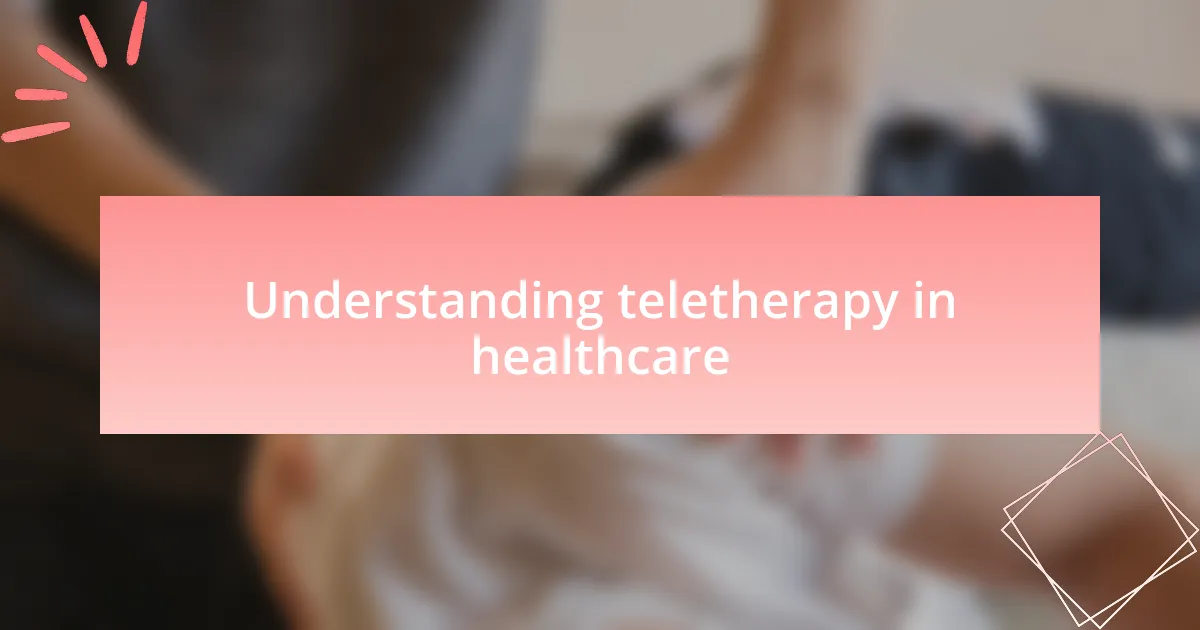
Understanding teletherapy in healthcare
Teletherapy has emerged as a game-changer in the healthcare landscape. I still remember my first experience with it; I felt both the excitement and apprehension of using a screen as my therapist’s face. It was like stepping into uncharted territory, but I quickly realized the convenience and comfort it provided.
What truly strikes me is the level of accessibility teletherapy offers. Consider individuals living in remote areas, where mental health services might be scarce. Is it fair that distance should dictate the quality of mental health care? I’ve spoken with people who finally found a therapist that understands their needs, thanks to teletherapy, bridging gaps that once felt insurmountable.
Yet, I believe there’s an emotional nuance to teletherapy that we can’t overlook. Sometimes, the lack of physical presence can feel isolating. I think back on a session where I yearned for the comforting atmosphere of an in-person consultation. It raises the question: can technology replicate the warmth of a face-to-face interaction? This dynamic adds a layer of complexity that warrants thoughtful consideration in the effectiveness of teletherapy.

Benefits of teletherapy for patients
One of the most notable benefits of teletherapy is its flexibility. I recall a client who struggled to find time for therapy between work and family commitments. When we switched to teletherapy, their stress levels significantly decreased. They could log on from home, sometimes even while their kids were napping, which made all the difference in maintaining consistency in their mental health journey.
Another advantage is the reduction of stigma. I’ve seen patients who were hesitant to seek therapy in person due to fear of judgment. With teletherapy, they could access care from the privacy of their own homes. It made our initial sessions much more comfortable, allowing them to express themselves openly without worrying about being seen entering a clinic.
Moreover, teletherapy can enhance the therapeutic relationship. From my experience, it allows for more frequent check-ins and follow-ups, which can foster a deeper connection between therapist and client. I remember one individual who shared their struggles more candidly because they felt safe in their environment. What a powerful reminder that sometimes, being in a familiar space can unlock the doors to genuine conversation.
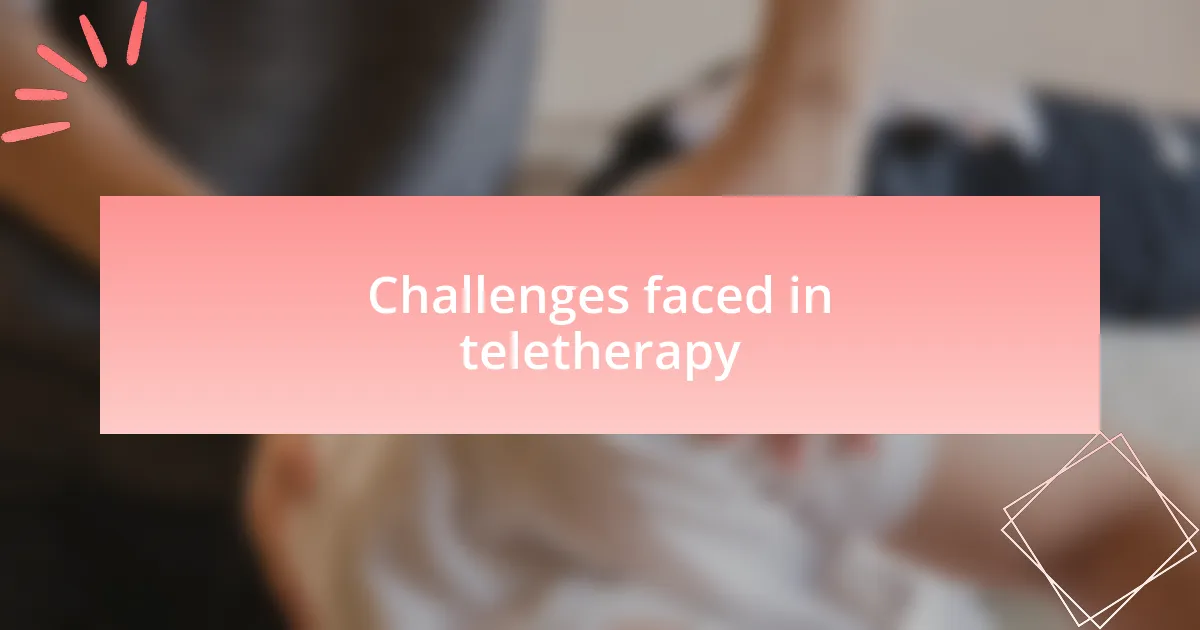
Challenges faced in teletherapy
While teletherapy offers many advantages, it also presents several challenges that can impact its effectiveness. One major concern is the potential for technical difficulties. I remember a session where my internet connection dropped unexpectedly, leaving my client feeling abandoned mid-conversation. This disruption not only interrupted the flow of our discussion but also created anxiety for both of us. Just imagine trying to work through delicate emotions when the technology fails you!
Another hurdle is the lack of non-verbal cues, which play an essential role in therapy. I often rely on body language to gauge a client’s emotional state, but in a virtual setting, those subtle signals can be lost. For instance, I once had a teen client who struggled to articulate their feelings, yet their slumped shoulders and averted gaze spoke volumes. Without those visual cues, it was challenging to connect and truly understand what they were experiencing.
Lastly, there’s the element of privacy, which can be particularly tricky in the home environment. I recall working with a client who found it hard to open up because they were concerned about being overheard by family members nearby. It poses the question: How can we create a safe and secure space when therapy happens in the living room? These challenges highlight the importance of being innovative and adaptive as we navigate the evolving landscape of mental health care.
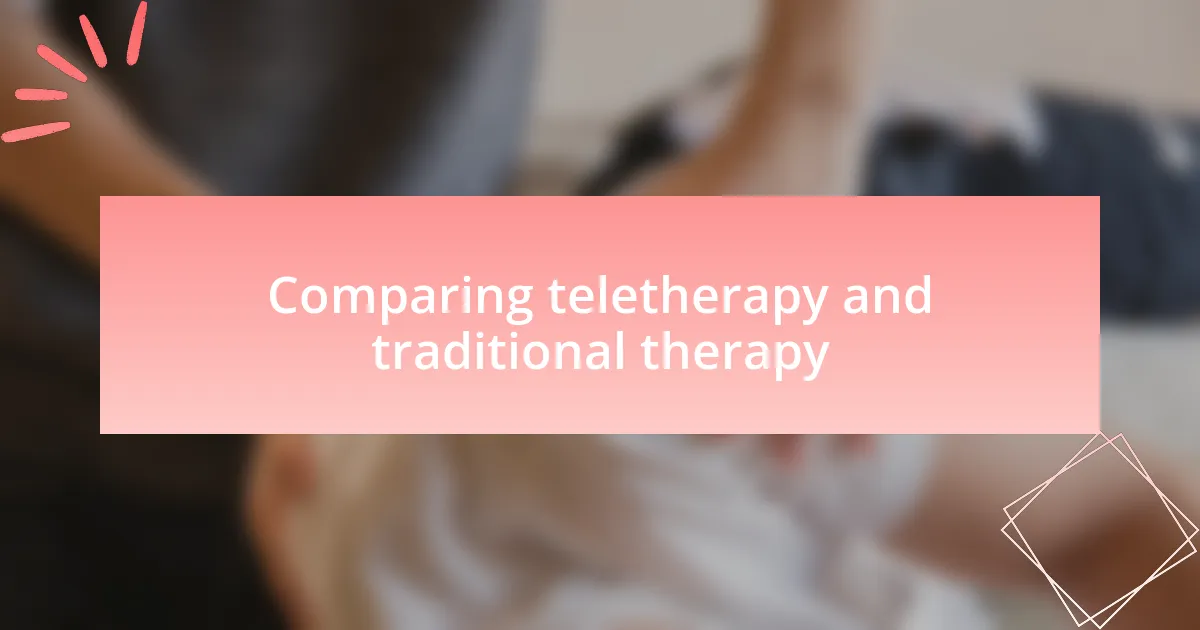
Comparing teletherapy and traditional therapy
When comparing teletherapy to traditional, in-person therapy, I find that convenience often takes the spotlight. For example, I once had a busy professional who struggled to find time for therapy between meetings and family commitments. The ability to attend sessions from home not only eased their burden but also allowed them to engage in therapy more consistently. However, it begs the question: does convenience come at the cost of connection?
On the flip side, there’s something profoundly human about being physically present with a therapist. I remember a client who expressed that the energy of the room significantly impacted their feelings of safety and openness. Being in the same space allowed us to share moments of silence, which sometimes spoke louder than words. It makes me wonder, can teletherapy truly replicate that intimate environment that fosters healing?
Additionally, I’ve seen varying levels of engagement between the two formats. In-person sessions often allow for deeper emotional exploration, which I’ve witnessed firsthand during group therapy. The shared experiences and collective energy among participants can evoke a sense of community that’s hard to replicate online. Does that community connection enhance the therapeutic experience more than we might realize?
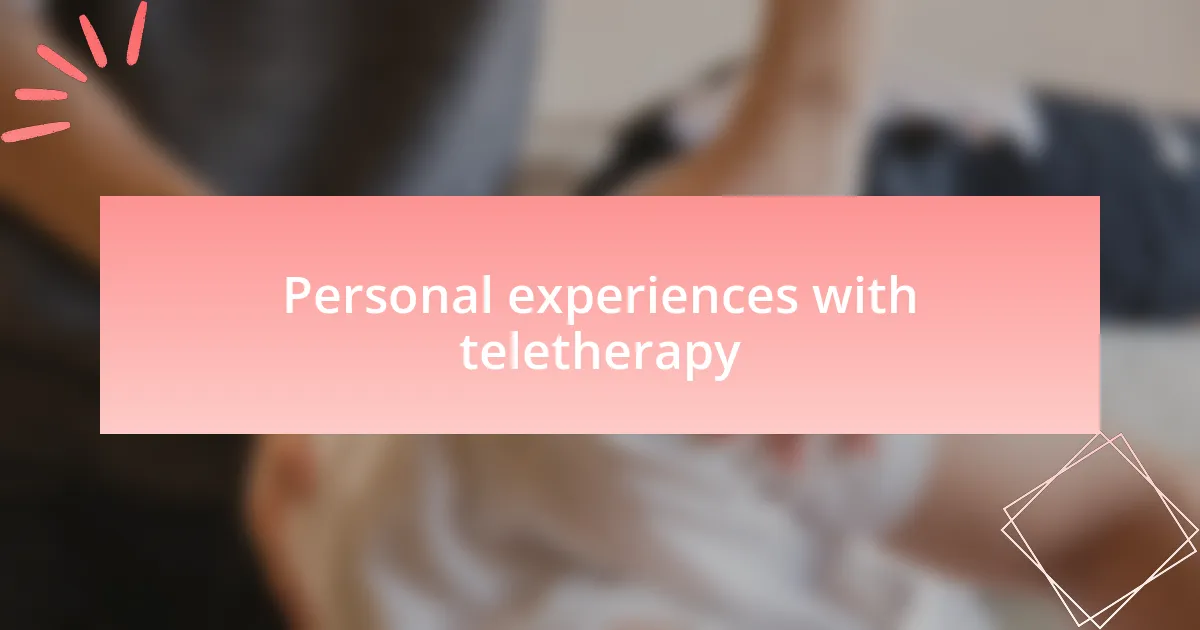
Personal experiences with teletherapy
I can recall my first experience with teletherapy during a particularly hectic time in my life. I was skeptical at first, wondering how a screen could offer the same therapeutic benefits as sitting in a cozy office across from my therapist. However, as the session began, I was surprised by how quickly I felt at ease. The familiar questions and prompts still resonated, and I realized that emotional breakthroughs could still happen, even through a digital medium.
One memorable session involved discussing a deeply personal issue, and I found myself tearing up as I spoke. I looked at my therapist’s empathetic expressions through the webcam, and it struck me: while the physical presence was missing, the virtual connection was still palpable. I asked myself, can genuine empathy transcend screens? In that moment, I understood that teletherapy could forge its own unique bonds, albeit in different ways.
Yet, I must admit, there were moments when the lack of physical presence was challenging. During one session, I brought up a troubling thought that I struggled to articulate. In traditional therapy, I could have leaned into the comforting ambiance of the room or even taken a pause to collect myself. In contrast, with my laptop, I felt a bit more exposed, as though I were laying bare my soul in the cold light of my living room. This made me question whether the environment sometimes plays a role in how comfortably we can express ourselves. Ultimately, my journey with teletherapy has shown me that while there are pros and cons, the emotional growth I’ve experienced remains invaluable.
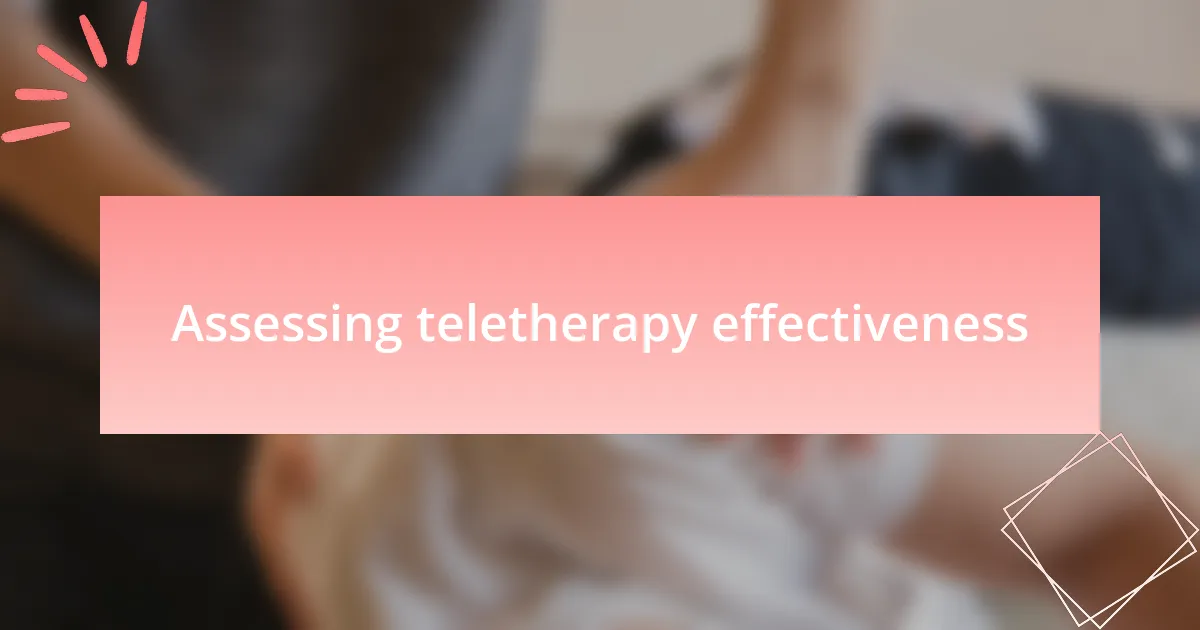
Assessing teletherapy effectiveness
When I think about assessing the effectiveness of teletherapy, one aspect that stands out to me is how clients respond to digital sessions compared to traditional settings. In my experience, many people can articulate their thoughts and feelings just as openly online; however, I often wonder if this platform provides the same level of confidentiality and comfort. For instance, there were times I could sense that my online environment, which included family members wandering in and out, affected my ability to dive deep into certain topics. Did the physical space truly impact my emotional engagement?
I’ve also noticed that outcomes of teletherapy often hinge on individual preferences. For some, the convenience of a session from home is a game-changer. Personally, I’ve had friends who dived into regular teletherapy sessions because they didn’t have to deal with the stress of commuting. This made me think: do we assess effectiveness based solely on session frequency and convenience? Emotional progress is equally important, and I found that even just a slight uptick in my mood or a feeling of being heard was a great indicator of effectiveness.
Furthermore, the tools and techniques used in teletherapy can also shape the effectiveness of the experience. I recall a session where my therapist introduced an app that guided mindfulness practices between our meetings. This added layer not only allowed me to engage with therapy outside of our sessions, but it made me question—could integrating technology into therapy enhance emotional resilience? While the answers might vary from person to person, I believe it’s essential to keep exploring how these digital interactions continue to evolve and impact mental health journeys.

Future of teletherapy in healthcare
The future of teletherapy in healthcare is undoubtedly promising, but I can’t help but wonder how evolving technology will continue to shape our interactions. I recently attended a webinar focused on virtual reality (VR) therapy, where practitioners used immersive environments to enhance therapeutic experiences. Imagining how such advancements might lead to more engaging sessions excites me—will we soon be able to step into calming landscapes during a tough discussion?
As we look ahead, integrating artificial intelligence (AI) tools into teletherapy could bring a new level of personalization. For example, I once spoke with a clinician experimenting with AI to analyze client conversations and tailor interventions more effectively. The thought that these programs could help detect subtle cues in our dialogue is fascinating. What if AI could highlight moments when a client seems particularly vulnerable or engaged, providing immediate support in real time?
On a more human level, the future might foster even deeper connections between therapists and clients. I recall the impact of online community groups I participated in, where sharing experiences brought a sense of belonging. Could teletherapy evolve into a more community-driven approach? By creating a space where clients interact and support one another alongside their therapist, we might redefine what emotional support looks like in a digital age.